Ever wonder how to make hard kombucha (i.e. kombucha with more alcohol in it)? We’re breaking down the basics to alcoholic kombucha. It’s easier than you would think!
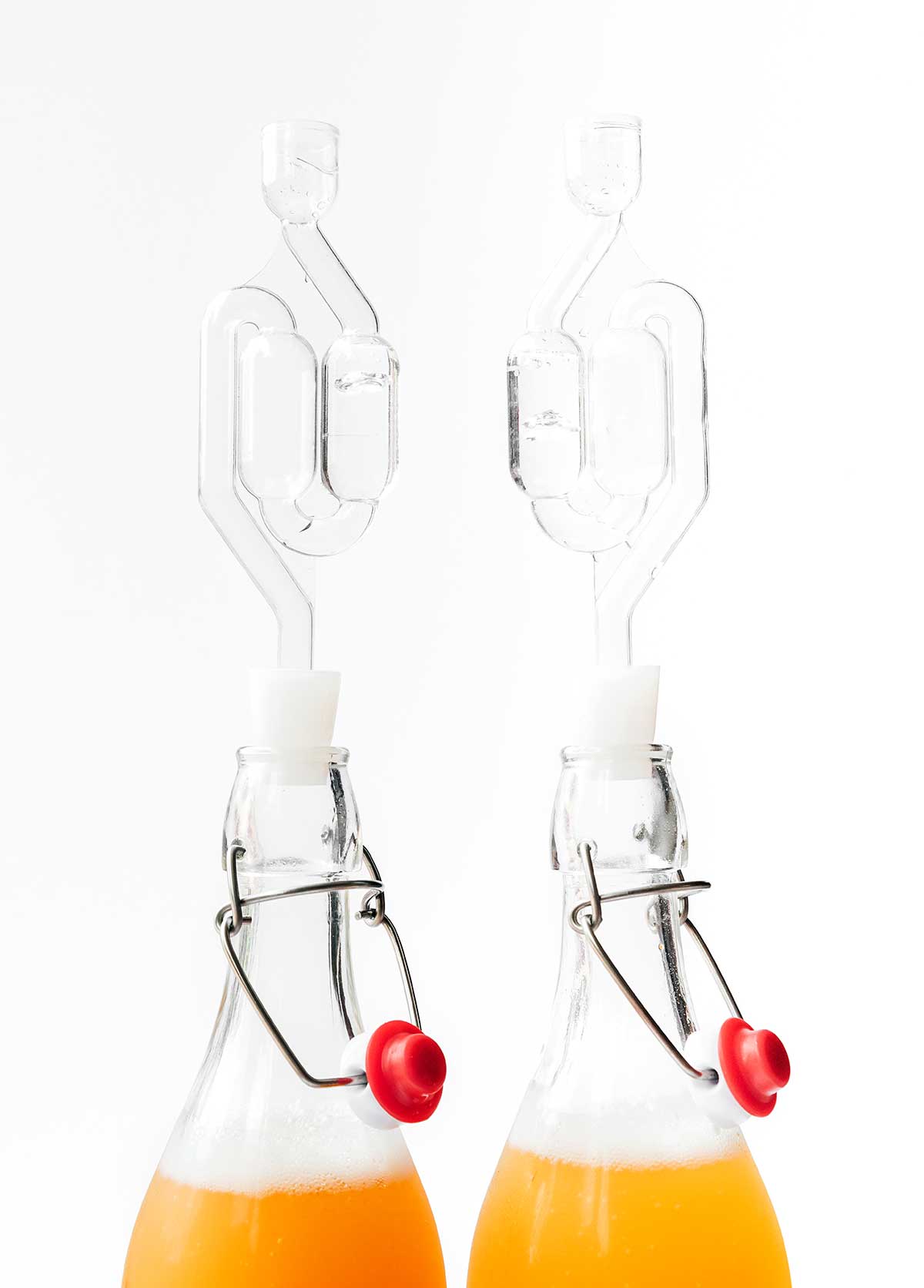
The basics of hard kombucha
Kombucha naturally contains some alcohol (about 0.5%). This is due to the reaction between the naturally occurring yeast in the kombucha, which produces trace amounts of ethanol (alcohol).
Typical kombucha yeast strains do not produce much alcohol on their own, so what do you do if you want to increase the amount of alcohol in your kombucha? Add a different kind of yeast!
By adding a different strain of yeast, such as champagne yeast, to your kombucha, you can make a hard kombucha beverage with a higher ABV (alcohol by volume), around 5%!
After much experimentation (and years of brewing non-alcoholic kombucha to help guide me), I’ve finally landed on the method of brewing hard kombucha that’s both easy and reliable. Let’s brew!
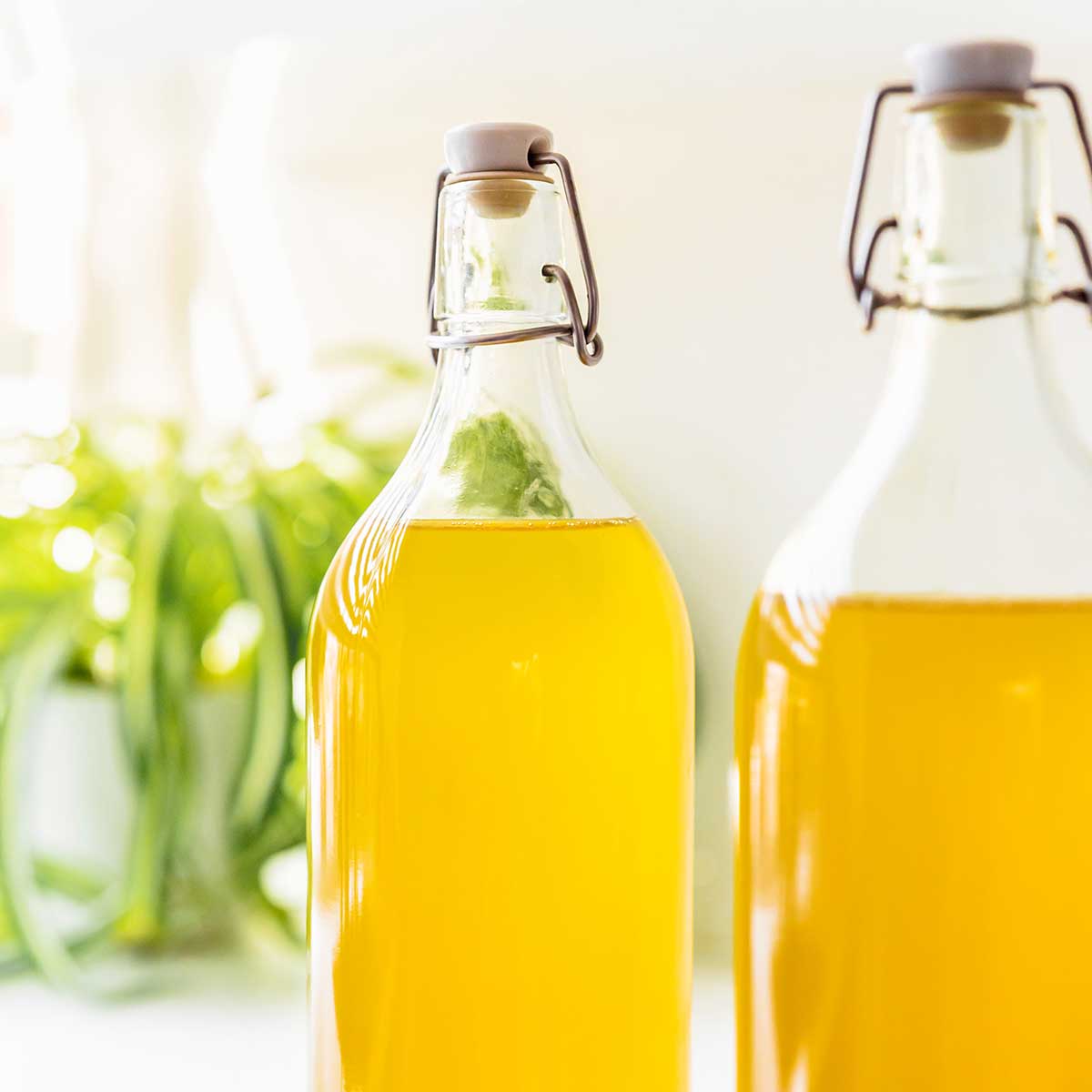
Main Ingredients & Supplies needed for alcoholic kombucha
Kombucha from a first fermentation
First up, you’ll need some kombucha! Take your batch of kombucha straight from the first fermentation to make hard buch. (Here’s how to make kombucha in the first fermentation.) You can use kombucha made from green or black tea here.
Yeast
Adding an additional strain of yeast (different from the kombucha yeast) will help drive up the alcohol content of your kombucha. The type of yeast you choose to use will impact the finished flavor. Some options include:
- Champagne yeast (like this EC-1118 dry wine yeast), which gives a distinctly champagne flavor to your hard kombucha
- Ale yeast (like this SafAle US-05), which has a more neutral flavor
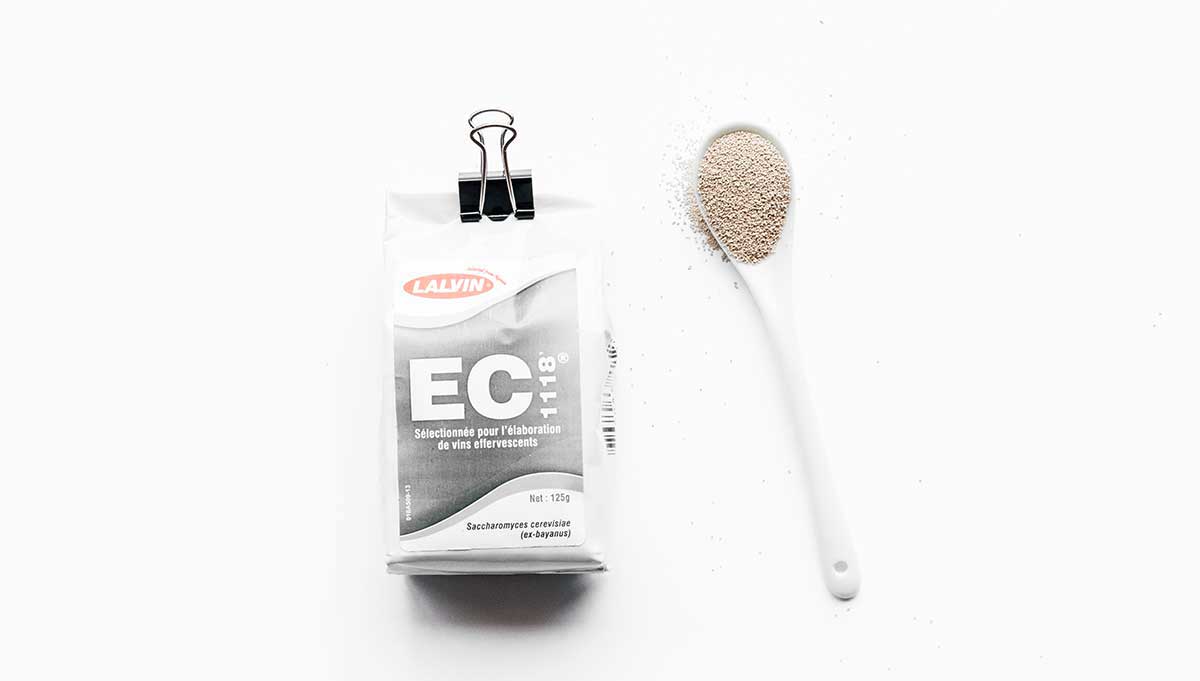
Airlock
The final extra piece of gear you’ll need to brew hard kombucha are airlocks. These effectively let carbonation escape without letting oxygen in.
“But doesn’t kombucha need oxygen?” Good question! When making kombucha in the first fermentation, the bacteria need oxygen to ferment properly. But once the kombucha is finished and you’re ready to booze it up, you’ll want to prevent oxygen from getting to the bacteria so that the bacteria don’t eat the alcohol you’re making! (More on the relationship between bacteria and alcohol in kombucha here.)
A lid won’t work here because you need to allow for air to leave the bottle!
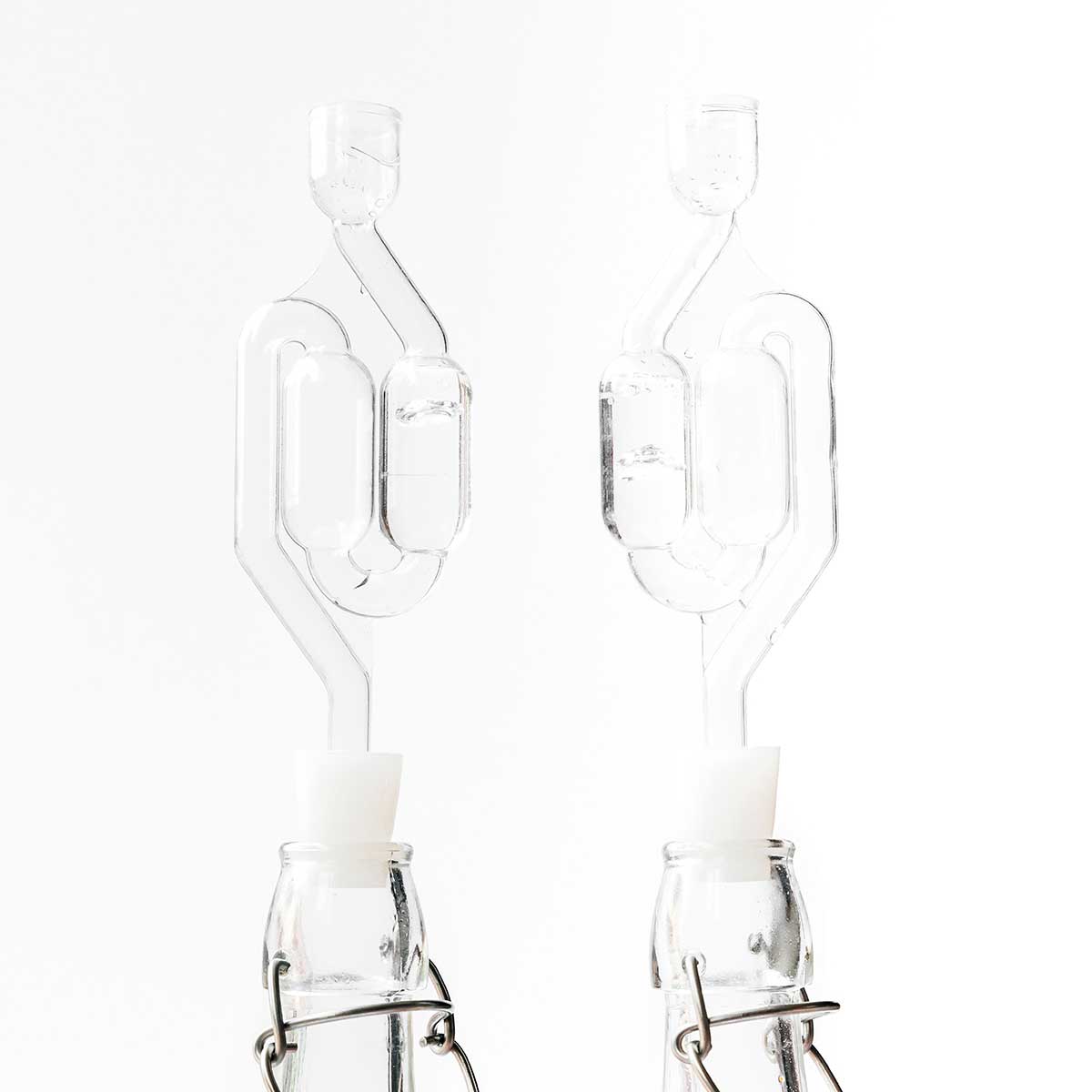
How to make hard kombucha
The process of making hard kombucha is a little different from making traditional kombucha in that we’re adding an extra step in the middle. It goes something like this!
- 1st Fermentation: Make the kombucha (6 to 10 days). This is when you turn sweet tea into kombucha!
- 2nd Fermentation: Make it boozy by adding yeast and sugar, then let alcohol develop (7 to 14 days)
- 3rd Fermentation (optional): Add flavors and seal shut to carbonate (3 to 10 days)
Easy enough, right? Let’s dig into the details!
1st Fermentation: Make the kombucha
In the first step, you’re making kombucha just as usual. You’ll just put sweetened tea, starter kombucha, and a SCOBY (symbiotic culture of bacteria and yeast) into a large jar and let it ferment for 6 to 10 days until you reach your desired flavor (a mix of sweet and tart). Get instructions for the first fermentation here.
2nd Fermentation: Make it Boozy
In the second step, we’ll add a slurry of yeast, sugar, and water, which will increase the alcohol content of your brew. You’ll need:
- 1 cup hot water
- 1 cup white sugar
- 1 tsp yeast (champagne or ale yeast, see notes above)
- 1 gallon of kombucha (from first fermentation)
- Airlocks
1. Yeast Slurry: Stir together the hot water and sugar until sugar is dissolved. Let it cool to lukewarm, then stir in yeast. Allow the yeast to activate for 5 minutes, until bubbles form and the yeast is frothy.
2. Bottle: Meanwhile, transfer kombucha to bottles or a growler (or any vessel with an opening that will fit your airlocks. Portion yeast slurry equally into each bottle of kombucha.
3. Airlock: Fill airlocks with water (to the designated line – you may need to read the instructions for your particular airlocks). Place airlocks onto each bottle.
4. Ferment: Set bottles somewhere dark and room temperature, and let ferment for 7 to 14 days. It’s ready when the flavor is somewhat dry and boozy! If you’re not moving on to the next step (adding flavor), seal the bottles shut and transfer to the fridge to stop the fermentation process.
“I’ve made it and it’s WONDERFUL!
I was wondering what you needed to do to raise the alcohol content. More Yeast? More sugar?”
3rd FERMENTATION: Add flavor
In this final (and optional) step, you can add flavors to give your hard kombucha a fun taste. This is the equivalent of the “second fermentation” in traditional kombucha brewing. You’ll just add whatever flavors you want to your bottle (like pureed fruit, fruit juice, ginger, herbs, or spices), then seal it shut. Let sit for 3 to 10 days, until bubbly and carbonated. Transfer bottles to the fridge to stop the fermentation process. Check out all of our flavor recipes here!
How much alcohol is in my hard kombucha?
The amount of alcohol in your finished hard kombucha will depend on how much sugar you added in the 2nd fermentation. Typically each 1 cup of sugar will give you about 4% ABV. Increasing this ratio and adding more sugar will result in a higher alcohol level.
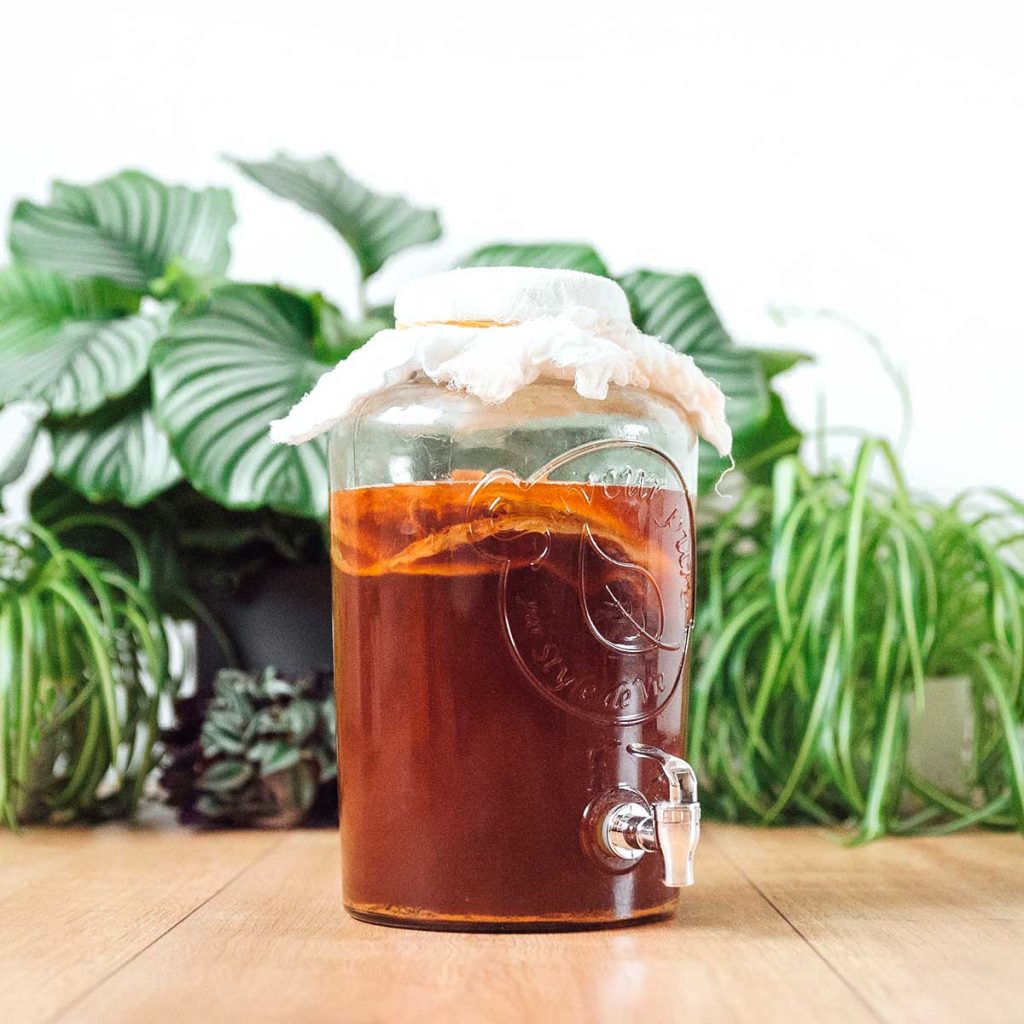

How To Make Hard Kombucha
Ingredients
- 1 cup hot water
- 1 cup white sugar
- 1 tsp champagne or ale yeast
- 1 gallon unflavored kombucha, from a first fermentation
Instructions
- Yeast Slurry: Stir together the hot water and sugar until sugar is dissolved. Let it cool to lukewarm, then stir in yeast. Allow the yeast to activate for 5 minutes, until bubbles form and the yeast is frothy.
- Bottle: Meanwhile, transfer kombucha to bottles or a growler (or any vessel with an opening that will fit your airlocks. Portion yeast slurry equally into each bottle of kombucha.
- Airlock: Fill airlocks with water (to the designated line – you may need to read the instructions for your particular airlocks). Place airlocks onto each bottle.
- Ferment: Set bottles somewhere dark and room temperature, and let ferment for 7 to 14 days. It’s ready when the flavor is somewhat dry and boozy! If you’re not moving on to the next step (adding flavor), seal the bottles shut and transfer to the fridge to stop the fermentation process.
- Flavor (optional): At this point you can flavor your bottles however you want! See our favorite kombucha flavors here.
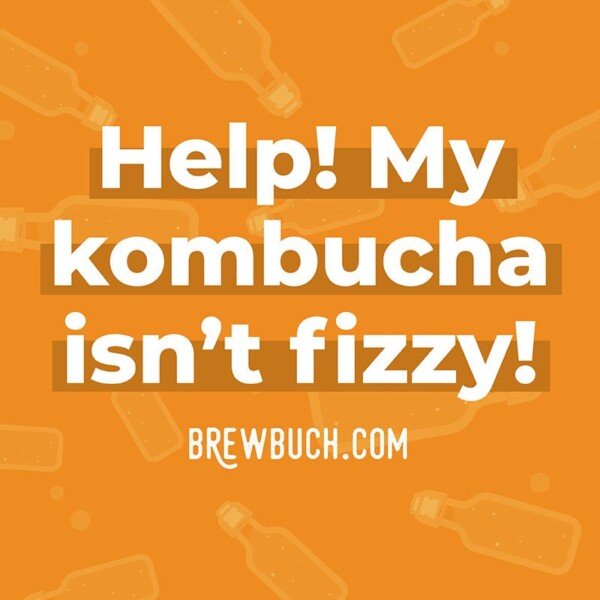
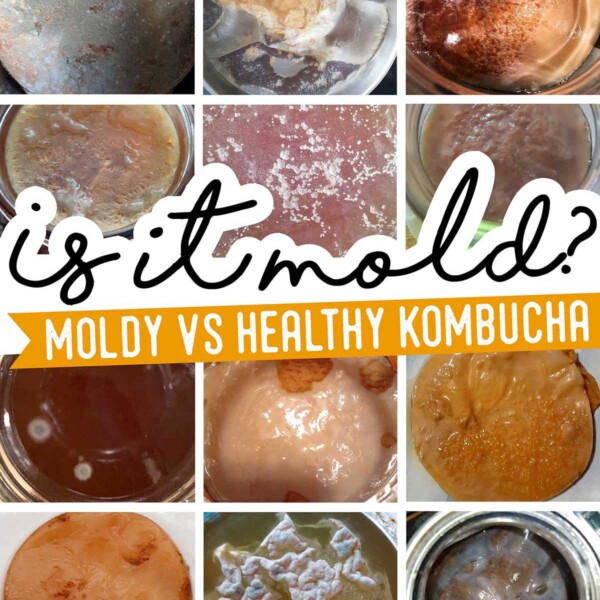

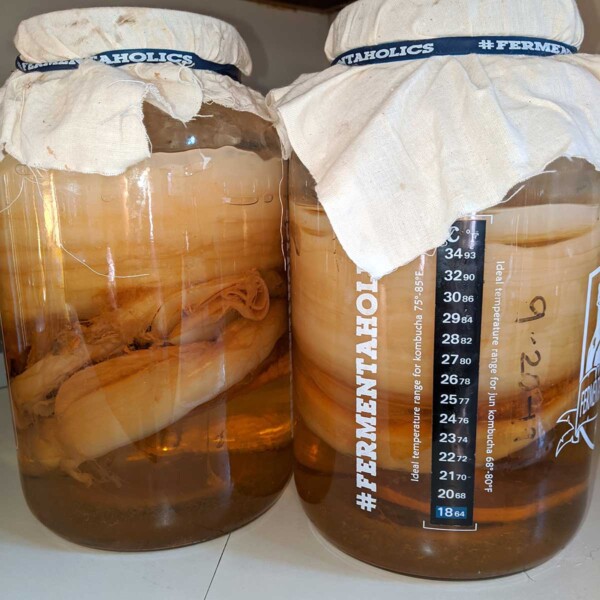
Hi Sarah-
I love your website! I read all the Qs and didn’t see this…my Q is how much air space to leave in bottle neck of F2? Ie between yeasty booch and airlock stopper? Like another person commented, the yeasty foam kinda makes a plug (maybe this goes away in time?) My logic says leave as little air as possible, but I also don’t want the yeast scum and/or a new scoby to plug up the top of the bottle. Am I overthinking this?
I usually fill it up until it’s about at the neck of the bottle! A little air space is good for providing a bit of oxygen to the brew 😀
Thank you for your tips! My first time brewing hard booch – I just finished my 2nd fermentation & started to add fruit for the 3rd ferm. However, while adding the fruit I noticed the booch is already carbonated! Would you have any idea on why that might be? Is this normal? I’m hesitant to seal the bottles for 3rd fermentation, in fear of an explosion haha.
That’s normal – carbonation is a natural part of fermentation!
Help! I accidentally added the slurry to my new batch that did NOT go thru F1! I bottled a batch, started a new one, then added the slurry because I thought i had put the other one up. Ugh! Can I save it??
You could let it ferment and see what happens! In my experience, adding the slurry before F1 creates a much more champagne-like flavor instead of kombucha.
This seems healthy actually.. What are the health benefits? I’m searching for some healthy alcohol consuming. This is red wine seems good.. Read about vodka, but not sure that’s so healthy, this seems better. 😉
But what about all of the sugars in kombucha? That’ not healthy so red wine might be best.. I have not done much scientific medical research.. Have anyone of you?
How much sugars are in these drinks? What’s the pros and cons? Thanks!
I left my SCOBY in for my yeast fermentation. I simply added the yeast/sugar slurry to the gallon jug. Should I remove the SCOBY? Or can I use it for another hard kombucha 2nd fermentation?
I’d remove it so it doesn’t become contaminated with another strain of yeast! But it can be used for further 1st fermentations 😀
Hi just started brewing kombucha and would like to try hard kombucha. I live in kind of a remote part of Alaska and I’m having a hard time finding champagne yeast. I have a batch that’s ready for the second fermentation so I’m kind of desperate to move forward with it. Is there anything else I can use like a can of already made hard kombucha? I see that you said bakers yeast would not work. HELP!
I’m not sure if another can of hard kombucha would work honestly, but it could be a fun experiment! I had best luck finding champagne yeast online if you’re able to get it that way.
Thanks for this great guide Sarah! I’m wondering how much sugar I would have to add to make kombucha closer to wine strength? For instance, do you know how much ABV would increase if I, say, doubled the sugar to 2 cups? Would that cause any issues with the fermentation or flavor? Thanks again!
Each additional cup of sugar should result in a 4% increase in alcohol 🙂
Hi,
I’ve tried making two batches of hard kombucha, and both times it seems as though there is little to no alcohol content. I thought maybe I messed up the ratios the first time but was diligent the second time around, but ended up with the same result. I used ale yeast in the 2nd fermentation. Could it be the yeast, or add more sugar, or possibly my airlock setup?
Thanks!
Typically to get more alcohol you would just need to add more sugar!
Hi Sara, thank you for this!
One question, for the yeast mix can I use organic unrefined cane sugar (azúcar mascabo)? cause its hard for me to see the bubbles after putting the yeast and I don’t want to waste more of it.
thank you!
I would only recommend using these sugars for kombucha brewing!
Love your style.
Knowledgeable but not a know it all.
I’m anxious to try the hard stuff.
Last time I tried I ended up with vinegar and quit brewing altogether.